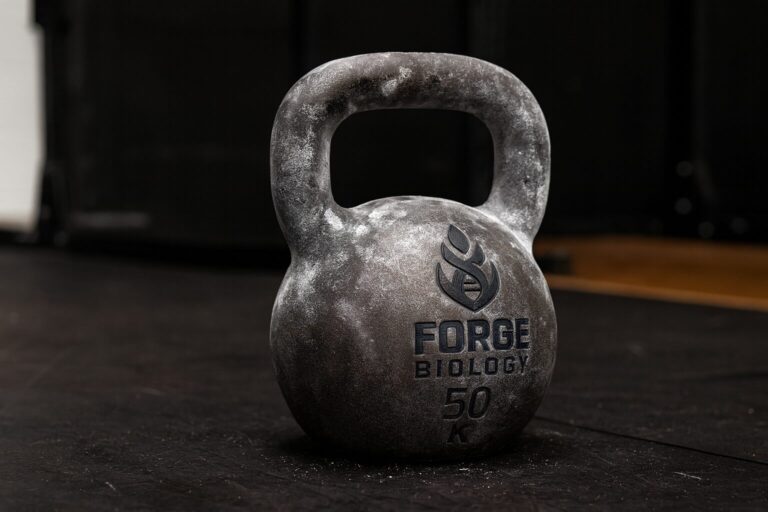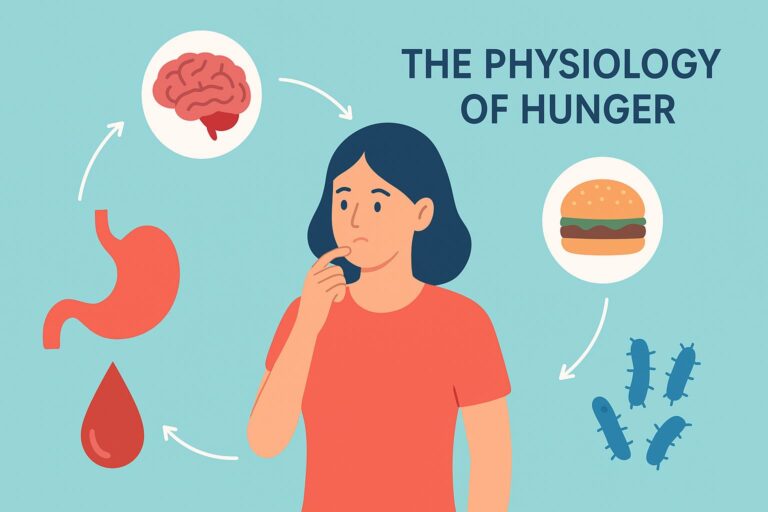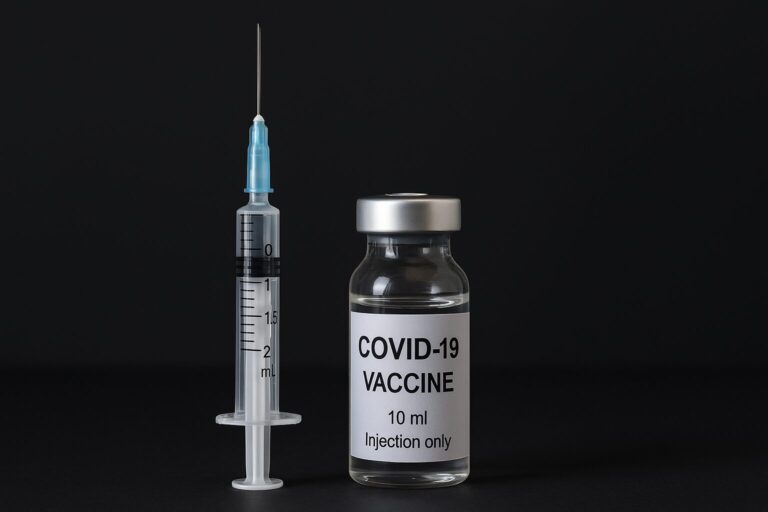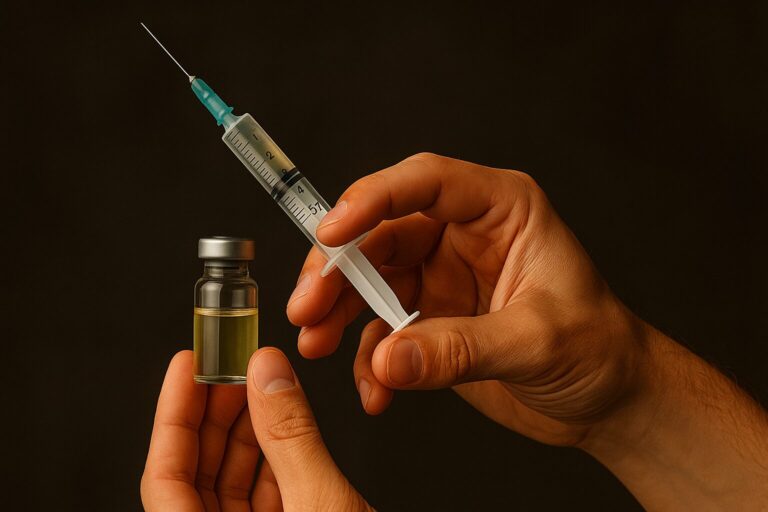
Running is one of the most ancient and accessible forms of physical activity known to humankind. It requires minimal equipment, can be performed almost anywhere, and yields profound physiological and psychological benefits. From cardiovascular improvements to cognitive enhancement, running remains a cornerstone of preventive medicine and human performance optimization.
Modern science has provided a deep understanding of the mechanisms behind these benefits. Far from being merely a means of burning calories, running triggers complex biological adaptations involving the cardiovascular, respiratory, musculoskeletal, and nervous systems. It has been the subject of extensive research in fields such as sports medicine, endocrinology, and neurobiology.

Regular running is strongly associated with a reduction in all-cause mortality. A landmark study published in Progress in Cardiovascular Diseases (Lee et al., 2017) concluded that runners have approximately a 25–40% reduced risk of premature death and live, on average, three years longer than non-runners. This benefit persists even when accounting for other lifestyle factors such as smoking, obesity, and alcohol consumption.
Cardiovascular health stands as perhaps the most well-documented area of improvement through running. Aerobic exercise enhances the efficiency of the heart by increasing stroke volume and cardiac output while lowering resting heart rate. According to Circulation (Myers et al., 2002), higher cardiorespiratory fitness is one of the strongest predictors of survival, surpassing even traditional risk factors like hypertension and diabetes.
Running also improves endothelial function—the ability of blood vessels to dilate and regulate blood flow—by stimulating the production of nitric oxide, a vasodilator molecule. This mechanism contributes to lower blood pressure and better oxygen delivery to tissues (Green et al., 2004, Journal of Physiology).
In terms of metabolic health, running plays a pivotal role in regulating glucose metabolism and insulin sensitivity. The skeletal muscle acts as a glucose sink during exercise, improving glycemic control and preventing insulin resistance, as shown in Diabetes Care (Hawley & Lessard, 2008).
Moreover, the hormonal changes induced by running promote favorable shifts in body composition. The release of catecholamines, growth hormone, and adiponectin facilitates lipid mobilization and oxidation, leading to reduced visceral fat—an independent risk factor for cardiovascular disease and cancer.
Bone health is another area significantly influenced by running. Weight-bearing activities like running stimulate osteogenesis by applying mechanical stress to the bone matrix, activating osteoblasts, and improving bone mineral density (Kohrt et al., 2004, Medicine & Science in Sports & Exercise). This is particularly relevant for the prevention of osteoporosis in aging populations.
However, there exists an important balance: excessive running without adequate recovery can lead to stress fractures or overuse injuries. Moderation and progressive load are key principles for reaping the skeletal benefits without adverse effects.
The musculoskeletal system benefits from both the mechanical and metabolic stimuli of running. Muscles involved in running—especially the quadriceps, hamstrings, calves, and gluteals—adapt by increasing mitochondrial density and capillarization, which enhances endurance capacity (Holloszy, 1967, Journal of Biological Chemistry).
From a respiratory standpoint, running enhances pulmonary ventilation and alveolar gas exchange. Trained runners exhibit increased maximal oxygen uptake (VO₂ max), the gold standard indicator of aerobic fitness. VO₂ max improvements directly correlate with better longevity and lower disease risk (Kodama et al., 2009, JAMA).
Psychological benefits of running are equally significant. Aerobic exercise stimulates the release of endorphins, endocannabinoids, and dopamine—neurotransmitters linked to pleasure, reward, and stress relief. This neurochemical cocktail produces the so-called “runner’s high,” a euphoric state described since the 1970s (Boecker et al., 2008, Cerebral Cortex).
Running has been demonstrated to alleviate symptoms of depression and anxiety. A meta-analysis in American Journal of Psychiatry (Schuch et al., 2016) found that regular aerobic exercise can reduce the risk of developing depression by up to 26%. The mechanism appears to involve neurotrophic factors such as BDNF (Brain-Derived Neurotrophic Factor), which promotes neurogenesis and synaptic plasticity.
Beyond emotional regulation, running enhances cognitive function and memory. Aerobic activity increases hippocampal volume and prefrontal cortex activation—regions crucial for learning and decision-making. Studies by Erickson et al. (2011, PNAS) confirmed that even moderate-intensity running can reverse age-related loss in hippocampal size in older adults.
In children and adolescents, running contributes to improved academic performance and concentration, as physical activity is linked to better executive function (Hillman et al., 2008, Neuroscience).
Immunological adaptations are another advantage. Moderate running strengthens immune surveillance by improving leukocyte circulation and increasing the activity of natural killer (NK) cells, which help prevent infections and cancer (Walsh et al., 2011, Exercise Immunology Review).
Nevertheless, excessive endurance running may transiently suppress immune function, especially in the presence of nutritional deficits or inadequate rest. Thus, balance is again crucial.
From an endocrine perspective, running modulates hormonal balance by reducing cortisol levels (in moderate doses) and improving the testosterone-to-cortisol ratio in men. This contributes to better stress resilience and anabolic recovery (Hackney, 2001, Sports Medicine).
In women, running can help regulate menstrual cycles and reduce the risk of polycystic ovary syndrome (PCOS) through improved insulin sensitivity and hormonal equilibrium (Thompson et al., 2003, Obstetrics & Gynecology).
The anti-inflammatory effects of running have been widely documented. Regular aerobic activity decreases levels of systemic inflammation markers like C-reactive protein (CRP) and interleukin-6, contributing to long-term protection against chronic diseases (Gleeson et al., 2011, Journal of Applied Physiology).
One remarkable finding is the impact of running on aging. Exercise influences telomere length, a biomarker of cellular aging. Research published in Preventive Medicine (Puterman et al., 2010) showed that individuals engaging in regular vigorous activity, such as running, maintain significantly longer telomeres, implying slower biological aging.
Running also enhances sleep quality, as it helps regulate circadian rhythms and melatonin production. Studies in Sleep Medicine Reviews (Dolezal et al., 2017) confirm that regular runners report improved sleep onset latency, deeper sleep stages, and better recovery.
Socially, running fosters community and collective well-being. Participation in running groups or events strengthens social bonds, enhances accountability, and contributes to mental health through a sense of belonging (Beauchamp et al., 2018, Psychology of Sport and Exercise).
Economically, running represents one of the most cost-effective health interventions available. It requires minimal infrastructure while significantly reducing the economic burden of non-communicable diseases such as hypertension, type 2 diabetes, and obesity.
Environmental benefits also exist indirectly: promoting running and other active commuting methods helps reduce vehicular emissions and sedentary lifestyles in urban populations.
The combination of mechanical efficiency and evolutionary heritage makes running a uniquely human trait. Anthropological studies suggest that endurance running played a key role in the evolution of Homo sapiens as persistence hunters (Bramble & Lieberman, 2004, Nature). This deep-rooted adaptation explains why running triggers such profound systemic benefits.
In rehabilitation settings, running programs (when properly dosed) are used to restore cardiovascular capacity and muscle function after cardiac or orthopedic events. Evidence-based protocols like cardiac rehabilitation phase II include controlled running intervals to safely elevate heart performance (Taylor et al., 2004, Cochrane Database).
From a performance perspective, running serves as a foundation for many sports disciplines. Improvements in aerobic base, lactic threshold, and neuromuscular coordination transfer to better performance in team and combat sports alike.
Here is a concise list summarizing the main benefits of running:
- Reduces all-cause mortality – runners live longer and healthier lives.
- Improves cardiovascular health – strengthens the heart, increases cardiac output, and lowers resting heart rate.
- Enhances endothelial function – promotes vascular dilation and blood flow.
- Lowers blood pressure – through improved nitric oxide regulation.
- Improves glucose metabolism and insulin sensitivity – helps prevent diabetes.
- Reduces visceral fat – supports healthy body composition and lipid oxidation.
- Increases bone mineral density – prevents osteoporosis through mechanical stress.
- Boosts muscular endurance – increases mitochondrial density and capillarization.
- Raises VO₂ max – improves aerobic capacity and overall fitness.
- Enhances respiratory efficiency – better oxygen exchange and lung function.
- Triggers endorphin and dopamine release – produces the “runner’s high.”
- Reduces symptoms of depression and anxiety – proven antidepressant effects.
- Stimulates neurogenesis – increases hippocampal volume and cognitive function.
- Improves memory and executive function – supports learning and attention.
- Strengthens immune function – boosts circulation and NK cell activity.
- Balances hormonal levels – optimizes testosterone, cortisol, and growth hormone.
- Improves menstrual health in women – helps regulate cycles and insulin response.
- Reduces systemic inflammation – lowers CRP and inflammatory cytokines.
- Slows biological aging – preserves telomere length and cellular vitality.
- Enhances sleep quality – promotes deeper, more restorative sleep.
- Promotes social interaction – group running builds community and motivation.
- Cost-effective health intervention – minimal cost, maximum return.
- Supports environmental sustainability – encourages active commuting.
- Aligns with human evolution – running is a natural, adaptive human trait.
- Useful in rehabilitation – aids recovery in cardiac and orthopedic therapy.
- Improves athletic performance – builds base endurance and coordination.
- Develops mental discipline – enhances resilience and self-regulation.
- Lowers risk of chronic diseases – including heart disease, cancer, and diabetes.
- Improves lipid profile – raises HDL and lowers LDL cholesterol.
- Enhances stress management – through hormonal and psychological balance.
- Boosts self-esteem – linked to goal achievement and body confidence.
- Supports cognitive longevity – protects against age-related decline.
- Improves digestive function – stimulates peristalsis and metabolism.
- Acts as “movement medicine” – benefiting nearly every system of the body.
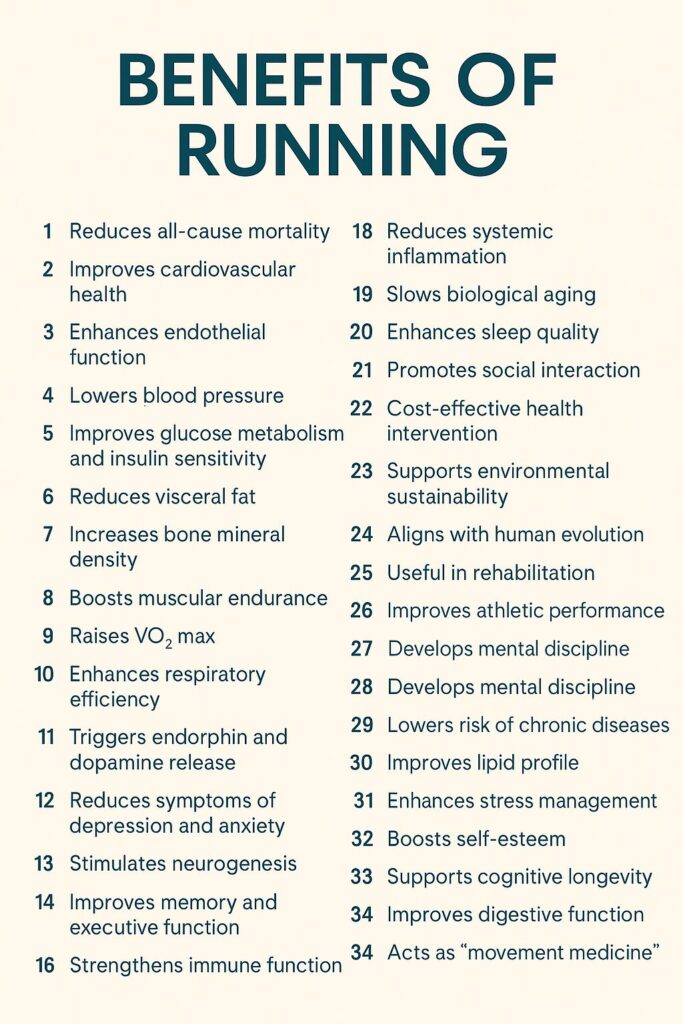
The mental discipline developed through running—goal setting, perseverance, and tolerance to discomfort—translates to psychological resilience and stress management in daily life and professional environments.
For beginners, it is advisable to start progressively. The American College of Sports Medicine (ACSM) recommends at least 150 minutes per week of moderate aerobic activity or 75 minutes of vigorous activity, with running being a prime candidate for achieving those goals (ACSM Guidelines, 2021).
To minimize injury risk, incorporating mobility drills, strength training, and proper footwear selection is critical. Evidence supports that mixed training modalities yield greater overall resilience and longevity in runners (Yamato et al., 2015, British Journal of Sports Medicine).
In summary, running is a multidimensional intervention that benefits nearly every system of the human body. It enhances longevity, improves metabolic and mental health, fortifies the skeleton and muscles, and cultivates resilience. Few behaviors offer such broad-spectrum protection and optimization for human health.
While technology and modern lifestyles continue to push people toward inactivity, running remains an enduring reminder of our evolutionary design: we are built to move. The science is clear—each step taken is not merely motion, but medicine.
References (APA 7th edition)
- Beauchamp, M. R., et al. (2018). Group-based physical activity and mental health. Psychology of Sport and Exercise, 39, 1–10.
- Boecker, H., et al. (2008). The runner’s high: Opioidergic mechanisms. Cerebral Cortex, 18(11), 2523–2531.
- Bramble, D. M., & Lieberman, D. E. (2004). Endurance running and the evolution of Homo. Nature, 432(7015), 345–352.
- Dolezal, B. A., et al. (2017). Physical activity, exercise, and sleep quality. Sleep Medicine Reviews, 32, 123–132.
- Erickson, K. I., et al. (2011). Exercise training increases hippocampal size and improves memory. PNAS, 108(7), 3017–3022.
- Gleeson, M., et al. (2011). The anti-inflammatory effects of exercise. Journal of Applied Physiology, 111(4), 1159–1165.
- Green, D. J., et al. (2004). Exercise and endothelial adaptations. Journal of Physiology, 561(1), 1–25.
- Hackney, A. C. (2001). Exercise and the male reproductive system. Sports Medicine, 31(1), 13–27.
- Hawley, J. A., & Lessard, S. J. (2008). Exercise training and insulin action. Diabetes Care, 31(Suppl 2), S263–S269.
- Hillman, C. H., et al. (2008). The effect of physical activity on children’s cognitive performance. Neuroscience, 159(3), 1044–1054.
- Holloszy, J. O. (1967). Biochemical adaptations to endurance exercise. Journal of Biological Chemistry, 242(9), 2278–2282.
- Kodama, S., et al. (2009). Cardiorespiratory fitness and mortality. JAMA, 301(19), 2024–2035.
- Kohrt, W. M., et al. (2004). Physical activity and bone health. Medicine & Science in Sports & Exercise, 36(11), 1985–1996.
- Lee, D. C., et al. (2017). Running as a key lifestyle medicine. Progress in Cardiovascular Diseases, 60(1), 45–55.
- Myers, J., et al. (2002). Exercise capacity and mortality. Circulation, 106(8), 893–898.
- Puterman, E., et al. (2010). Physical activity and telomere length. Preventive Medicine, 51(1), 40–44.
- Schuch, F. B., et al. (2016). Exercise as a treatment for depression. American Journal of Psychiatry, 173(10), 999–1008.
- Taylor, R. S., et al. (2004). Exercise-based rehabilitation for coronary heart disease. Cochrane Database of Systematic Reviews, 1, CD001800.
- Thompson, D. L., et al. (2003). Exercise and reproductive health in women. Obstetrics & Gynecology, 101(5), 995–1003.
- Walsh, N. P., et al. (2011). Immunological responses to exercise. Exercise Immunology Review, 17, 6–63.
- Yamato, T. P., et al. (2015). Strength training for injury prevention in runners. British Journal of Sports Medicine, 49(5), 356–361.*
Forge Your Mind. Build Your Biology.
Join the Forge Biology newsletter — where science meets strength.
Every week, you’ll get:
-
Evidence-based insights on training, performance, and recovery
-
Real analyses of supplements that work (and the ones that don’t)
-
Deep dives into hormones, nutrition, and human optimization
No fluff. No marketing hype. Just data-driven knowledge to build a stronger body — and a sharper mind.
Subscribe now and start mastering your biology.


